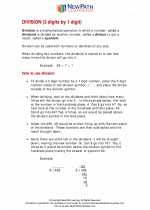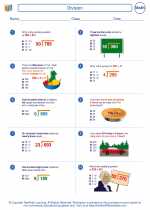Circumference
The circumference of a circle is the distance around the edge of the circle. It is similar to the perimeter of other shapes, such as rectangles or squares, but specifically refers to the distance around a circle.
Formula for Circumference
The formula for finding the circumference of a circle is:
C = 2πr
where C is the circumference, π (pi) is a constant approximately equal to 3.14159, and r is the radius of the circle.
Study Guide
- Understand the concept: Make sure you understand that the circumference is the distance around the circle, and how it is different from the area of the circle.
- Learn the formula: Memorize the formula C = 2πr, and understand what each symbol represents.
- Practice with examples: Work through practice problems to calculate the circumference of circles with different radii.
- Use π (pi): Understand the significance of π and how it is used in the formula to find the circumference.
- Real-life applications: Look for real-life examples where understanding the circumference of a circle is important, such as in engineering or design.
By understanding the concept of circumference and practicing with the formula, you can become proficient in calculating the distance around a circle.
.◂Math Worksheets and Study Guides Sixth Grade. Division
Study Guide Division
Division  Worksheet/Answer key
Worksheet/Answer key Division
Division  Worksheet/Answer key
Worksheet/Answer key Division
Division  Worksheet/Answer key
Worksheet/Answer key Division
Division 

 Worksheet/Answer key
Worksheet/Answer key
 Worksheet/Answer key
Worksheet/Answer key
 Worksheet/Answer key
Worksheet/Answer key

The resources above cover the following skills:
Connections to the Grade 6 Focal Points (NCTM)
Number and Operations: Students' work in dividing fractions shows them that they can express the result of dividing two whole numbers as a fraction (viewed as parts of a whole). Students then extend their work in grade 5 with division of whole numbers to give mixed number and decimal solutions to division problems with whole numbers. They recognize that ratio tables not only derive from rows in the multiplication table but also connect with equivalent fractions. Students distinguish multiplicative comparisons from additive comparisons.